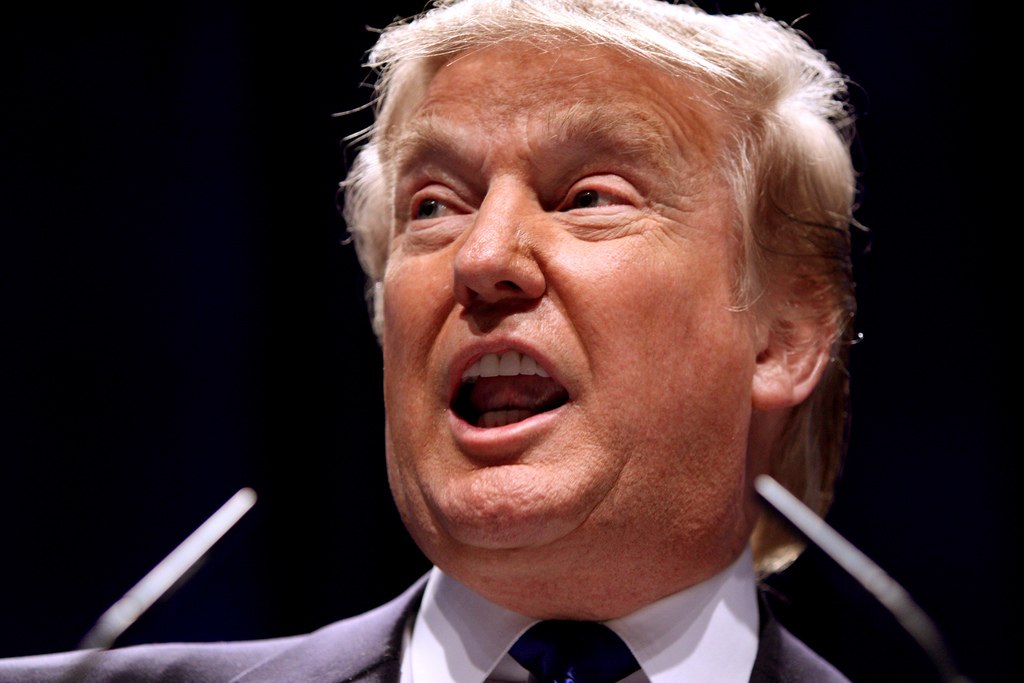Foreign policy during a presidential campaign always produces idealistic positions. George W. Bush argued that militaries should be used strictly to “fight and win wars;” not to engage in “nation-building.” John Kerry believed the U.S. could “go it alone” to end North Korea’s WMD program by opening direct talks with Pyongyang. And Barack Obama ridiculed Mitt Romney for identifying Russia as a threat to the U.S. Presidential candidates rarely take foreign policy positions that square with the complexities of reality.
But while many candidates’ foreign policy ideas may not be realistic for the U.S., they are not usually harmful. This is not the case with Donald Trump and his questioning of the U.S. commitment to NATO. The Republican presidential frontrunner told the Washington Post that the U.S. is paying too large a share of the total cost for a military alliance that has become “obsolete.” Essentially, Trump claims that the U.S. is not getting its money’s worth when it comes to the Atlantic Alliance.
“NATO is costing us a fortune,” Trump said. “Yes, we’re protecting Europe, but we’re spending a lot of money. … I think the distribution of the costs has to be changed.” The presidential candidate went on to say that while NATO was good in its time – the early years of the Cold War – it needs to adapt to today’s security environment – specifically, fighting terrorism.
Time for a foreign policy wakeup call
Trump is wrong. The benefits the U.S. receives from being in NATO far outweigh the costs. Estimates are that the U.S. accounts for roughly 73 percent of the $1 trillion annually in military spending by NATO countries combined. While $730 billion is a substantial sum, that military spending supports the largest trading relationship in the world — roughly $1.5 trillion in goods and services exchanged between the U.S. and EU. Additionally, there are seven million jobs that rely on this trade partnership. Finally, there are some $2 trillion in investment flows underpinned by NATO between the U.S. and the EU. Much of this prosperity comes from the security guarantee provided by NATO: 22 of 28 EU members are also members of NATO. The bottom line is simple: Businesses don’t locate in neighborhoods where there is conflict or instability.
NATO deters conflicts, or prevents them from spreading. When Putin annexed part of Ukraine, NATO was in place in case the Russian leader wanted to go further. Baltic States, Poland and the Czech Republic were nervous, but also aware of the underlying security guarantee of a military alliance in place since 1949.
The organization also provides the underlying security framework to prevent wars as countries undergo transitions. When the Soviet Union fell and the Warsaw Pact disintegrated, it was NATO that provided a platform to ensure the transition of these former “Soviet allies” could be done peacefully and in a way that they felt protected. And NATO continues to be there as countries change borders and shift ethnic populations (former Yugoslavia and Eastern Europe in the 1990s) and deal with the foreign refugee crisis.
While some European countries don’t spend as large a percentage of their GDP on defense as the U.S., Europeans pay in other ways. U.S. military bases (and troops) often reside on European soil. At one point, there were more than 400,000 Army troops in Germany alone. NATO also conducts the vast majority of its military exercises in Europe, damaging farmland and disrupting road and air traffic for the average European.
If there was a war in Europe, it would be fought on European soil. It took decades for the continent to recover from the Second World War, which dealt tremendous damage to European infrastructure — setting the continent back decades. The U.S. avoided many of these issues – except for Pearl Harbor – while gaining status as the most powerful country in the world, a position it continues to occupy. During the Cold War, the U.S. and Europe both knew that a nuclear war would begin in Europe. It is hard to put a price tag on such a commitment.
NATO may need to evolve, but it needs to remain firmly in place
NATO needs to continue to adapt to the current terrorist security threats facing its members, but, unbeknownst to Trump, the Alliance has been responding. This includes more intelligence-sharing between members and non-members. NATO has also engaged in counterterrorist operations that include “pre-emptive” strikes against terrorist targets with a new “response force,” counterterrorism training of military personnel and civilians in Afghanistan and Iraq, and military cooperation with Central Asian governments.
The need for NATO to adapt to new types of security threats has always been a part of the alliance’s history. NATO went from deterring Soviet aggression to providing a way to reintegrate a rearmed but democratic and market-based Germany into an open and united Europe. The threat of terrorism, which exploits the European Union’s open market for goods, capital, and people, simply means NATO needs to continue adjusting its strategy, operations, and approach to fit this new security environment. It has a long and successful history of doing so.
NATO remains vital to peace and prosperity in the U.S. and Europe. It safeguards the largest trading relationship in the world, ensuring prosperity for Americans and Europeans alike. It deters potential conflicts, as well as contains others. And, it is addressing evolving terrorist threats across Europe. The benefits for the U.S. are “huge.” This is something Donald Trump should consider before engaging in isolationist rhetoric that could undermine these rewards for America.
Photo: Gage Skidmore/Creative Commons

